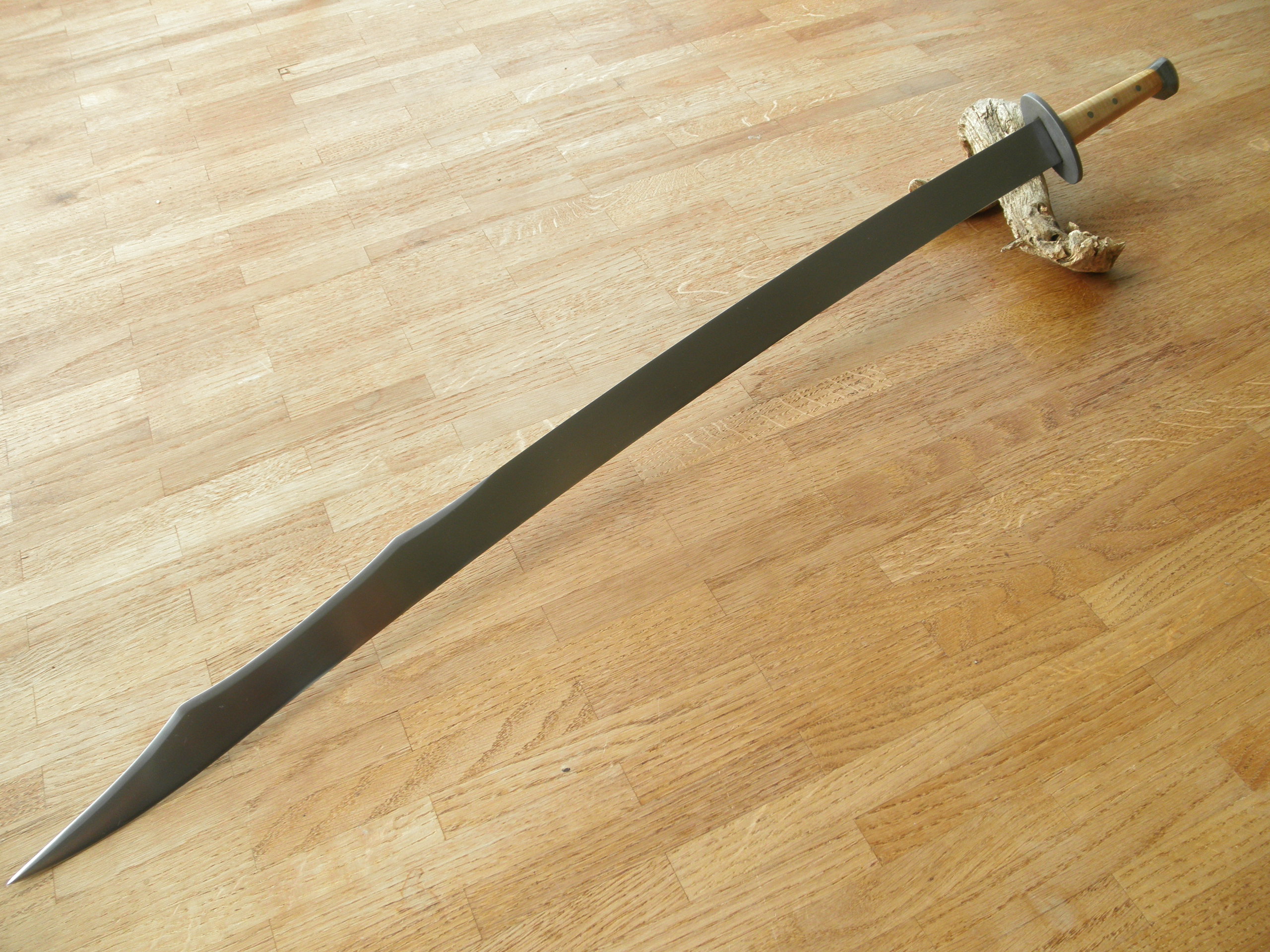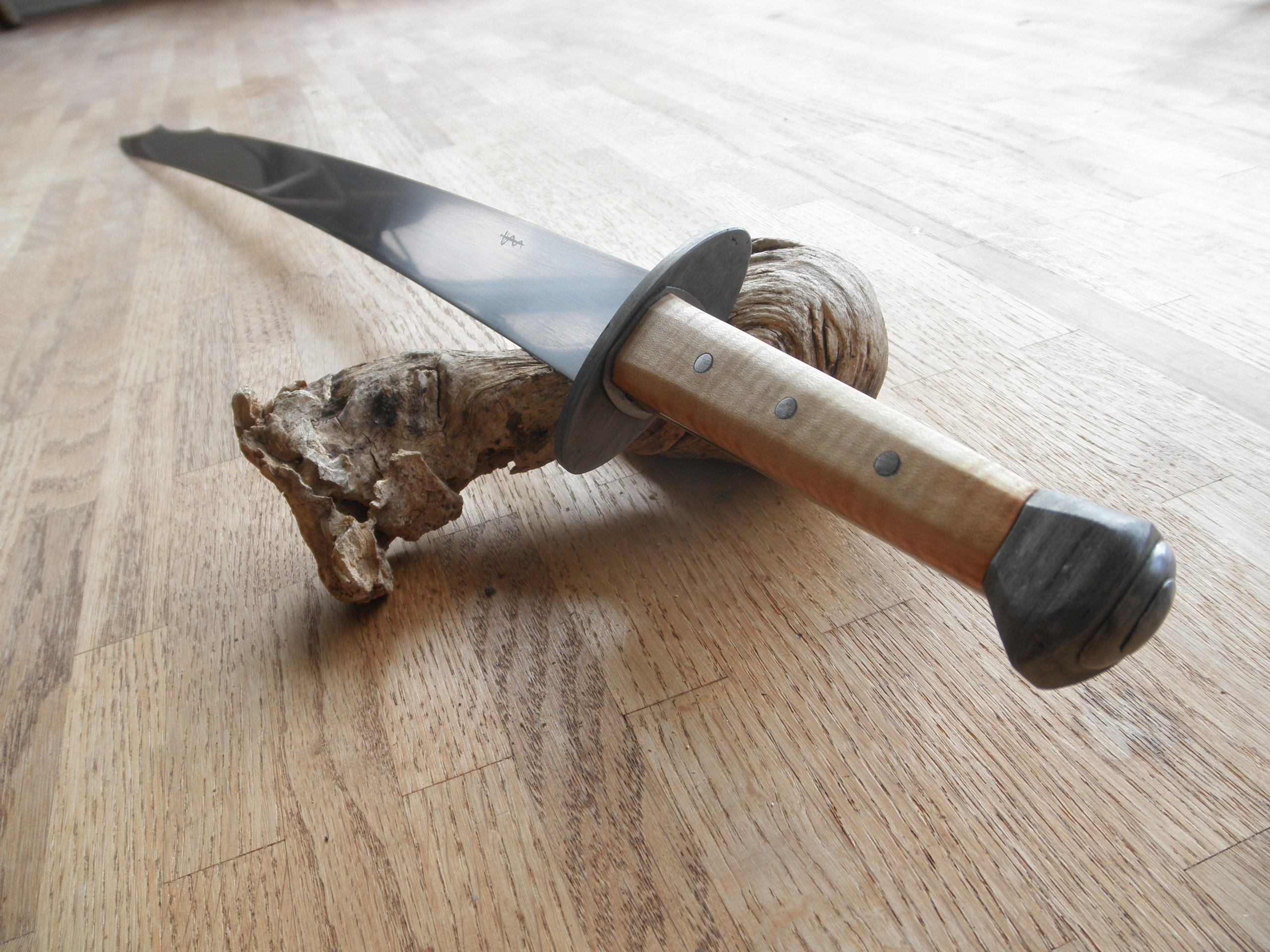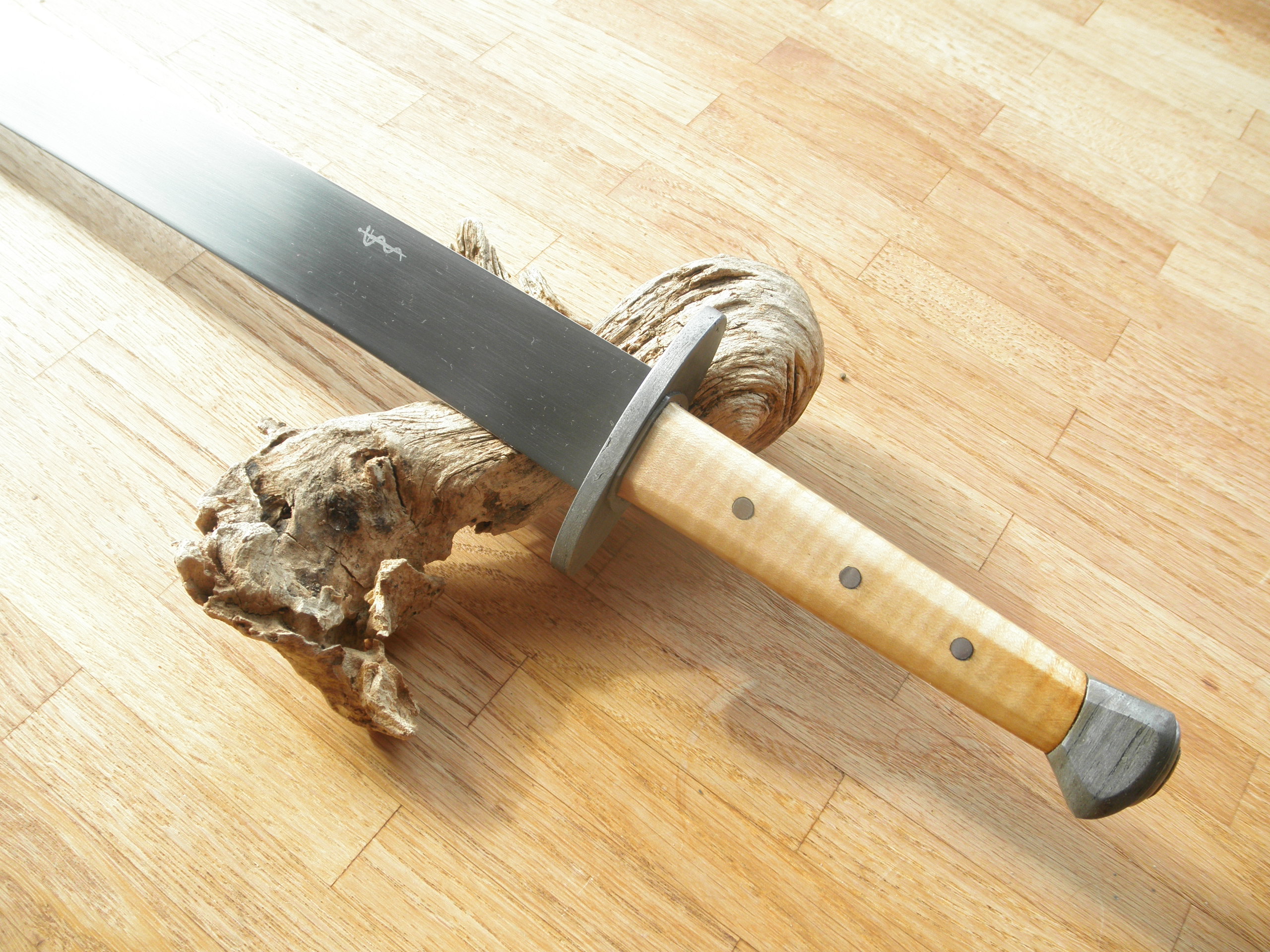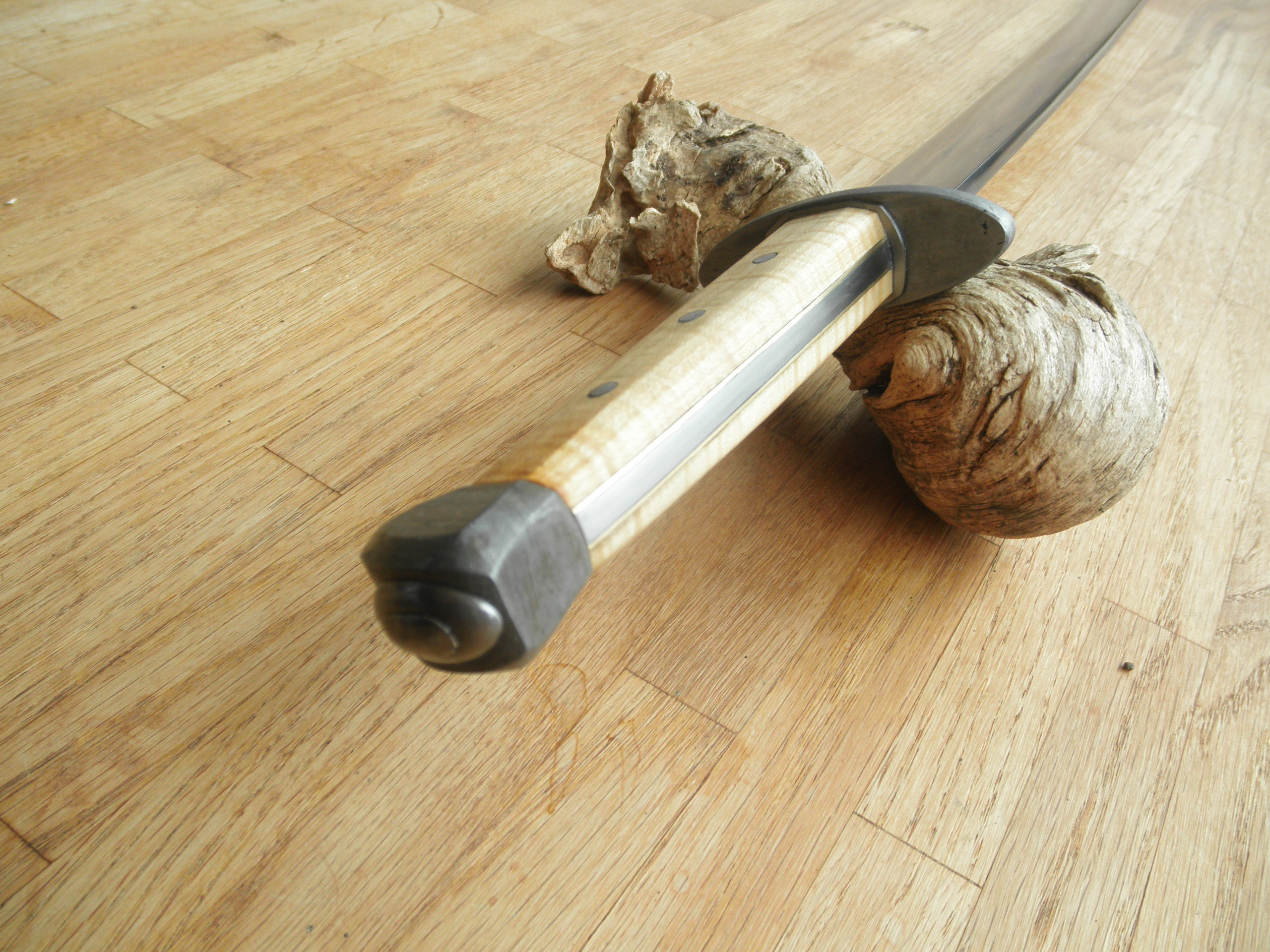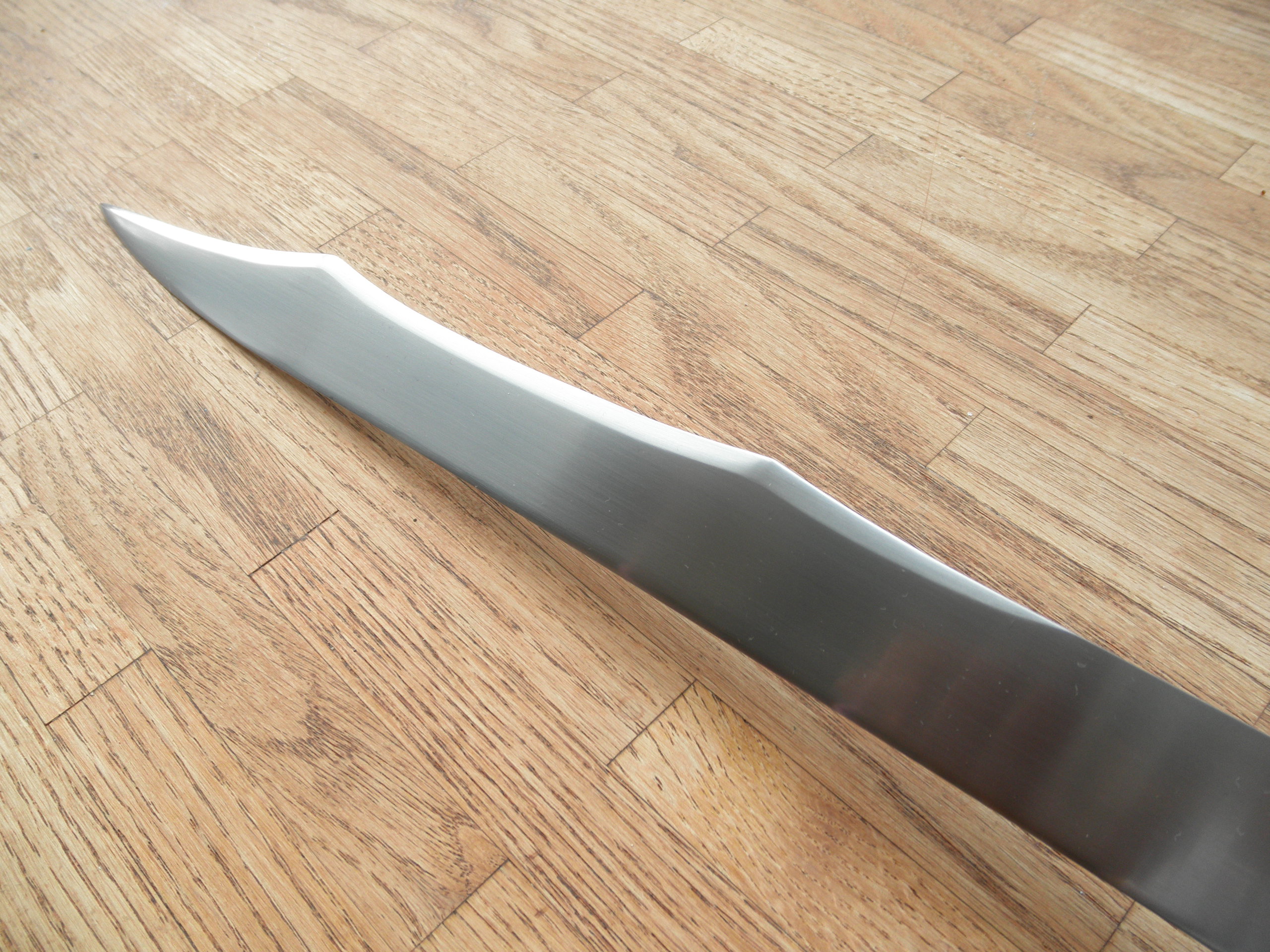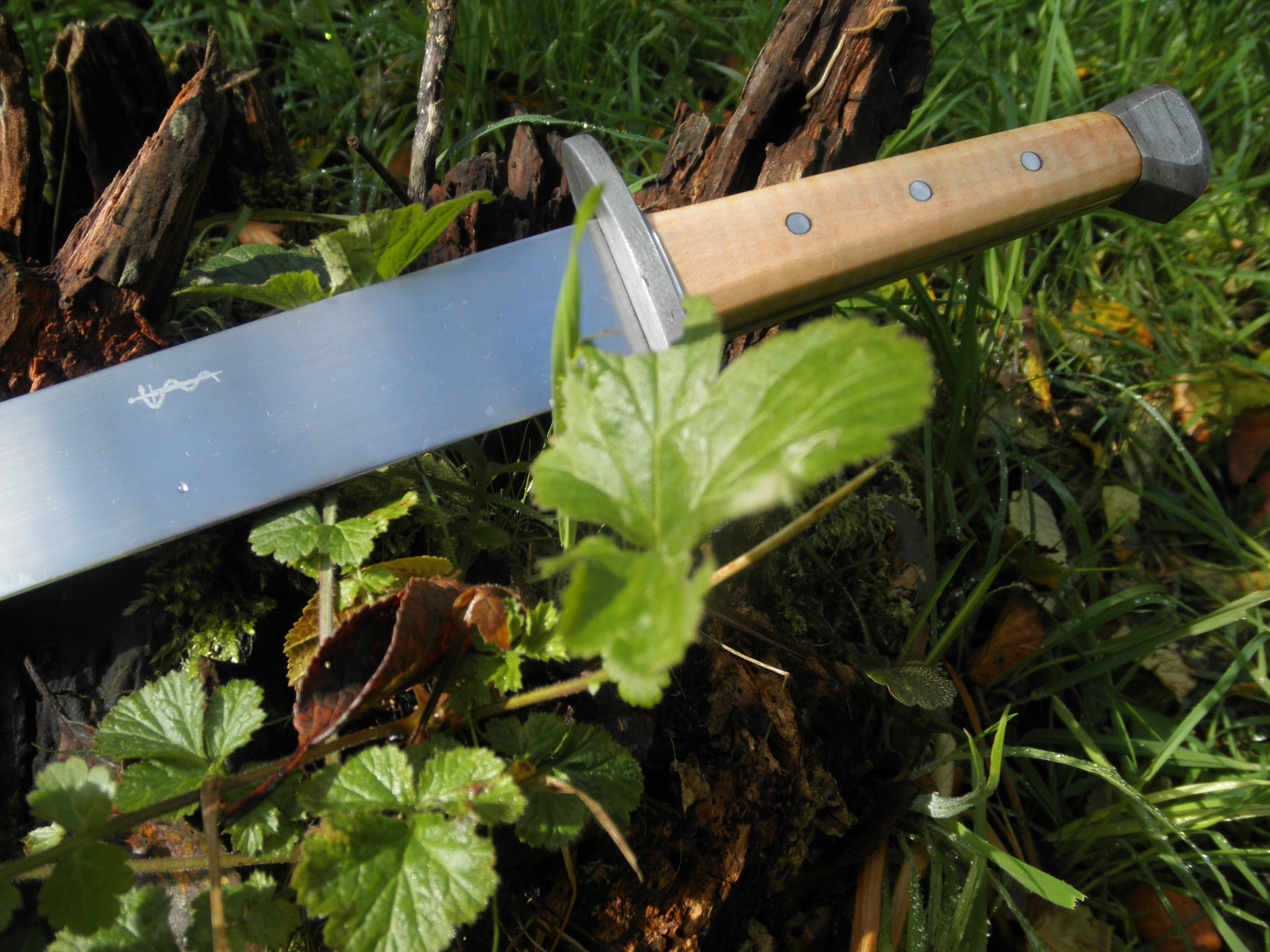If you‘ve been following my progress on this piece you‘ll know that the blade was originally intended to be a Langes Messer. However, during heat treatment, the blade took a severe forward curve (simple physics, the reason being the difference in volume between spine and edge). Instead of adding it to the pile of failed pieces, I decided to roll with it and this is what came from it. I‘m calling it a „Fantasy Recurve Sabre“ but you‘re free to pick whatever term you like 😉
Stats:
Steel: 56Si7, differentially tempered to 58Rc at the edge and around 45Rc at the spine
Overall length: 83.5cm (33“)
Blade length: 70.5cm (28“)
Blade width at base: 3cm (1.2“)
PoB: 17cm (6.7“)
CoP: ca 50cm (20“)
Weight: 590g (1.3lbs)
I actually had a pretty hard time deciding in which direction to go with the blade and went through what felt like a dozen different hilt designs. I found it challenging to find a design that worked well with with the most characteristic feature of this piece, the sweeping forward curve, neither overstating it nor detracting from it. The final design is a mixture of elements seen on a variety of bladed weapons from several cultures as well as purely fictious aspects. Though it may not work for everyone, I quite like it. It wasn‘t easy to find the correct pommel weight… I found a wide range of weights „kinda“ worked but it took a while and one discarded pommel (too heavy) until I was really happy with it.
A simple elongated disk serves as the guard. The pommel still has characteristics of the original Messer design. Both guard and pommel are crafted from roughly 150 years old wrought iron and etched to reveal their structure. For the wooden grip scales I selected some beautiful lightly colored maple wood. Brass liners between wood and tang, a steel spacer above the guard and a peen block add a small extra touch. Both pommel and grip are octagonal in cross section, their clear and straight lines gently contrasting the forward curving blade. All in all, this probably is the most complex hilt assembly I‘ve made so far, many interlocking parts that took a lot of time and careful work to fit together. A very different challenge compared to making a regular sword hilt.
Weighing slightly over one pound, this is a very light weapon. The balance still makes it a good cutter, with a definite bias towards the blade. It turns and flows wonderfully through cuts, always with pleasant forward pull in the hand but never sluggish or hard to redirect. Though the design and balance encourage cutting motions, thrusts do not feel unnatural and while the blade shape doesn‘t make accurate thrusting particularly easy, it definitely can be done comfortably enough.
Despite the aggressive concave distal taper and thin cross section, the blade is quite stiff. This is an advantage of single-edged designs, the blunt spine giving rigidity to the blade.
Thin, forward curving, with a long single bevel and an acute edge geometry: this sword is a very potent cutter. Not a shield or helmet splitter but very effective on soft targets. The sharpened double clip point aids in thrusting and allows for techniques that utilise the short edge.
As usual, I hope to soon add a cutting video.
Overall, I‘m happy that I was able to make something satisfying out of this blade. I‘ve found flexibility and a bit creative thinking to be quite helpful in this hobby (or profession). It often enough doesn‘t go according to plan… and had it not been for the mishap in heat treatment, I probably never would have made such a blade… wouldn‘t that have been a shame 😉
